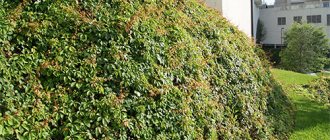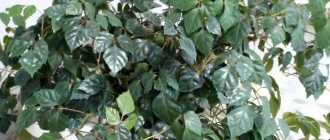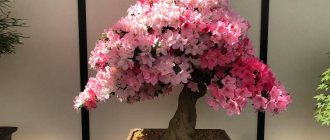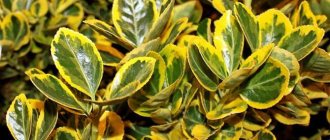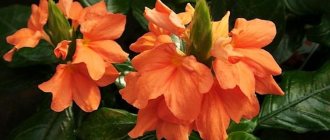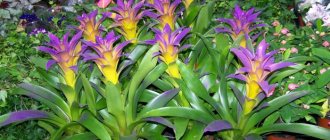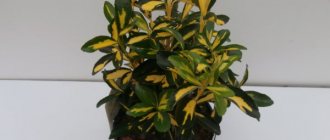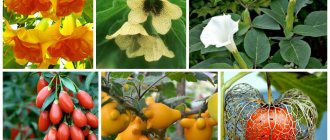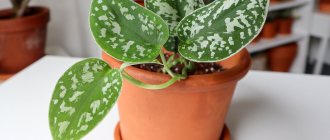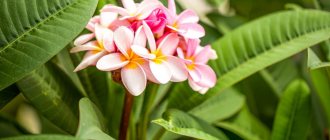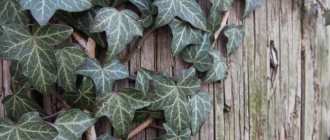Description of the plant
Cissus is a member of the Grape family, or Vitaceae, which includes more than three hundred plants, including those common in tropical and subtropical zones. A significant part of cissus are climbing vines, which, like ordinary grapes, cling to support through tendrils. Cissus foliage can be either whole or dissected.
In indoor floriculture, cissus blooms extremely rarely. Small and unassuming flowers on cissuses are collected into a kind of false umbrellas. Cissus is valued by gardeners as an easy-to-care, decorative foliage hanging plant, which is ideal for growing in hanging pots.
Popular varieties of cissus
In indoor floriculture, the most widespread are Antarctic Cissus, or Cissus antarctica, as well as Rhombifolia Cissus, or Cissus rhombifolia, which are distinguished by their shade tolerance and unpretentiousness.
Antarctic cissus (Cissus antarctica)
C. antarctica is a highly climbing plant. This cissus easily clings to supports with the help of its antennae. Antarctica has brownish stems, bright green leaves, up to 8 cm in size, oval and rough to the touch. The stems, petioles and tendrils are characterized by dense pubescence. The flowers are greenish in color and are collected in corymbose inflorescences.
The plant is characterized by active growth and unpretentiousness. Looks great in hanging pots and baskets.
Rhomboid cissus, or rhombifolia (Cissus rhombifolia)
C. rhombifolia belongs to the category of herbaceous vines and is the most unpretentious species in indoor floriculture. It has diamond-shaped, trifoliate and compound leaves of a dark green color, with serrated edges. The plant has pubescent stems and petioles, as well as small tendrils.
Under conditions of natural growth, C. rhombifolia blooms with very small, greenish-colored flowers, which are collected in a racemose type of inflorescences with the formation of edible red fruits.
Cissus discolor
C. discolor is the most decorative and attractive cissus in indoor floriculture. The foliage of this plant resembles living patterns, and the reddish background of the upper part of the leaves is complemented by silvery spots. The leaves have a purple color on the underside.
Under natural conditions, the plant grows in the tropics with a temperature of about 30°C and a high level of air humidity, which somewhat complicates the process of growing C. discolor at home.
Cissus striata
C. striata is characterized by the presence of very small three or five palmate leaves, which in their shape are very reminiscent of girlish grapes. The plant grows quite quickly and is absolutely not demanding in terms of air humidity. In winter, C. striata quite easily tolerates temperatures down to 30°C, which facilitates a stable transition of the plant into the resting phase.
C. striata is very convenient for indoor floriculture, but is extremely rare.
Cissus quadrangularis
C. quadrangularis is an evergreen type of vine. Such succulents can be successfully grown in indoor floriculture. The plant has fairly thick, tetrahedral shoots that are about 1 cm in diameter.
C. quadrangularis is a traditional medicinal plant used in the treatment of joints and bone tissue. The plant helps cleanse the blood and can improve its composition. Quite often used for weight loss and increasing overall tone.
In addition, in indoor floriculture, you can often find varieties of cissus such as:
- Cactus (Cissus cactiformis) ,
- Cissus rotundifolia,
- Cissus adenopoda (Cissus adenopoda),
- Amazonian cissus (Cissus amasonica).
Types of dyschidia
More than 120 varieties of dyschidia are found naturally, but only a few of them are used in culture. All of them are suitable for indoor growing, although they require a lot of attention.
Dischidia ovata. The plant has long green-pinkish stems covered with oval leaves. Young leaves are pink at first but gradually turn light green. Whitish veins are visible on the leaves, which increase the decorative appearance of the plant. This species tolerates drafts and slight cold snaps normally.
Dischidia ovata
Dischidia ruscusolifolia (Rusifolia). A very graceful form with long stems densely covered with heart-shaped small leaves. For this appearance, flower growers often call it “dischidia of a million hearts.” During the flowering period, small snow-white flowers appear in the axils of the leaves. Flowering is accompanied by an intense honey aroma.
Dischidia ruscusolifolia
Dischidia pectinata. The creeping stems are densely covered with aerial roots and oval leaves. The shoots are colored light green. Twice a year the liana blooms with small pink or cherry flowers.
Dischidia crestDischidia vidalia. The variety has a bright green color and many rounded leaves. Light pink flowers appear 2-3 times a year.
Dischidia Vidalia
Dischidia hirsuta. Quite a rare variety with rounded, densely pubescent foliage. Relief veins are visible on each leaf. During the flowering period, a large number of small purple flowers are formed on short peduncles.
Dischidia hirsuta
Dischidia raffles. The plant grows long (up to 5 m) shoots covered with oblong, dense leaves. It blooms with small yellowish flowers, which are collected in small umbrellas.
Dischidia rafflesia
Apple leaf dischidia. It has more elastic stems and large foliage. Each leaf is shaped like an apple and is green with white spots.
Dischidia apple leaf
Reproduction and planting rules
As a rule, cissus is propagated in spring or early summer, with the appearance of new, young shoots on the plant. These plants are quite easy to propagate. It is enough to follow the following technology:
- cut cuttings from lateral new shoots, 20 cm long. Each cutting should have a small fragment of the main shoot;
- remove all the lower leaves from the cut cuttings, and then lower their end part into the composition with a mixture of growth hormones;
- fill the flower pot with a nutritious soil mixture for indoor plants and plant several, but not more than five, prepared cuttings there at once;
- cover the flower pot with cuttings with plastic film to create the effect of a miniature indoor greenhouse, and place it in a warm and bright place.
If new, young shoots appear on the cuttings, then rooting was successful and you can remove the film coating from the flower pots. Further care consists of fairly economical watering when the soil dries to a depth of one centimeter.
Well-rooted cuttings should be planted one at a time in flower pots filled with compost soil. A good effect is achieved by pinching the apical part of the shoots, which will allow the plant to branch. In spring, cissus trees should be pruned.
How to propagate?
Several methods of reproduction are practiced. Cissus is a fast-growing plant, so reproduction does not cause problems.
- By cuttings. Cuttings are cut at any time of the year. The pot is filled with a light nutrient mixture with a high content of sand and peat. 3-4 cuttings are placed in one pot. Regularly moisturize and maintain the temperature at 20-22°C. The appearance of new leaves indicates successful rooting.
- Dividing the bush. Mature, heavily grown bushes can be divided during transplantation. It is recommended to shorten the vines of the planted parts so that the plant has the strength to build up the root system.
- Seeds. Antarctic cissus is mainly propagated by sowing seeds. The optimal sowing time is spring. Pour a sand-peat mixture into a small box and moisten it. The seeds are distributed over the surface of the soil and lightly sprinkled with the same soil. The seedlings are kept under glass and systematically ventilated. After the appearance of the second true leaf, they are planted in separate pots with a diameter of 7 cm. Further transplants - as they grow.
Caring for indoor grapes
Despite the fact that almost all types of cissus are unpretentious plants and can be recommended for indoor cultivation even by novice gardeners, in order to maintain the healthy appearance of Cissus, cultivation technology should be followed.
Choosing a place in the room
It is necessary to place cissus plants in rooms that are oriented east and west. Liana-like plants can grow well on the north side, in artificial light conditions. When placed on southern windows, indoor grapes require shading from direct sunlight.
The most light-loving is C. rhombifolia, which is recommended to be grown near sunny windows.
Watering rules
Species that have a fairly large mass of foliage, which requires significant evaporation of moisture, primarily need abundant watering. In spring and summer, cissus plants should be watered as abundantly and often as possible. The water should be used soft and warm. It is recommended to settle tap water before watering.
In cold seasons, the amount of irrigation is reduced, and watering is carried out solely to support the life support of the plant’s root system.
Temperature and humidity
Temperatures when growing rhombifolia or Antarctic cissus should be moderate. During the cold season, temperatures can vary from 15 to 18 degrees Celsius.
For cissus multicolored, it is necessary to increase the air humidity parameters and maintain the temperature at a level of 16 to 20 degrees. Cissus are very responsive to summer spraying and weekly warm showers.
Top dressing
Fertilizing has a beneficial effect on the growth and development of cissus. Fertilizers should be applied during the active growth stage. Feeding is carried out from spring to autumn. For this purpose, it is recommended to use standard, complex fertilizers intended for feeding indoor plants. Depending on the condition of the cissus, fertilizing should be done once or twice a week.
Transfer
For young cissus, it is recommended to replant annually, which will activate the growth of the plant and significantly increase the volume of green mass. Adult cissus trees can be replanted no more than once every three years.
The size of the flower pot when replanting should be selected based on the volume of the plant’s root system. It is best to replant the plant in early spring.
Diseases
Cissus rarely gets sick, and some problems arise only due to irregularities in care. If you correct mistakes in time, you can avoid serious problems with the plant.
Root rot or brown spots
When there is excess moisture in cissus, the roots are the first to suffer. The plant becomes depressed and drooping. Wet brown spots also indicate excess water.
Treatment:
- Stop watering until 3 cm of the top layer of soil dries;
- the moisturizing regime should be clear and regular, cissus should be watered when the top layer of soil has dried out;
- in advanced cases, replanting and trimming rotten roots will help.
Drying leaves
Drying out and flying leaves occurs due to lack of moisture. A similar problem occurs in the following cases: the air in the room is too dry, the temperature is high, and watering is rare.
Need to:
- establish a hydration regime;
- place containers with wet peat around the perimeter of the plant;
- spray daily;
- If possible, move the cissus to a cool room.
Pale foliage, light spots
If green leaves suffer from dry light or brown spots, then this is a signal of intense lighting. Dried areas may form along the contour of the leaf plates.
To restore a flower, you need to move it to a less lit window or move it deeper into the room. Shading with a larger plant will also help.
Growth stopped and the foliage lost turgor
These signs are symptoms of malnutrition. Cissus is picky about feeding and needs supplements every 1-2 weeks. If black spots appear on the crown, you need to add phosphorus; if brown, you need to add nitrogen. However, it is advisable to support complex fertilizers, where 1/3 is nitrogen.
Stopping growth also indicates that the earthen coma is completely entwined with roots. Then the cissus simply will not develop. Young plants need to be replanted annually, each time choosing a larger pot.
Pests of indoor grapes
Cissus, along with other indoor plants, can be affected by certain diseases and pests. Most often, the leaves and shoots of indoor grapes are damaged by plant parasites such as leaf aphids and spider mites. At the first signs of damage, the houseplant should be isolated.
A small number of insect pests can be removed mechanically by wiping the leaves with a sponge moistened with soapy water. In case of mass damage, spraying with special solutions based on chemical insecticides should be used.
Problems during cultivation
In addition to plant parasites, ordinary care errors, as well as non-compliance with the basic rules of growing technology, can also harm indoor cissus plants.
Leaves dry out and fall off
Quite often you can observe when cissus leaves fade, dry out and fall off. As a rule, this situation occurs when growing a plant in a room that is too dry and hot. The situation can be corrected by changing the location of the plant and spraying it. Similar problems can also be caused by temperature changes and rotting of the root system.
The leaves have turned yellow
Yellowing of the foliage along the veins is characteristic of spider mite damage. In case of serious, widespread damage, systemic insecticidal agents are used. In addition, yellowing of the foliage may be associated with a violation of the watering regime and lack of nutrition. In this case, it is necessary to feed the plant with microelements.
Brown spots on leaves
The reason for the appearance of brown spots on cissus leaves is most often a lack of phosphorus or nitrogen nutrition of the plant. However, brown spots with elements of mold may indicate waterlogging of the soil in the flower pot and problems with the root system of the plant.
Brown tips on leaves
Darkening of the tips of the leaves can be a consequence of a violation of the watering regime, and also very often occurs when fertilizers of unsuitable composition are used for fertilizing. It is recommended not only to adjust the irrigation regime, but also to change the fertilizer used to feed the plants. When changing fertilizers, you should carefully monitor the plant’s reaction to the fertilizing.
